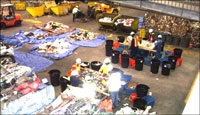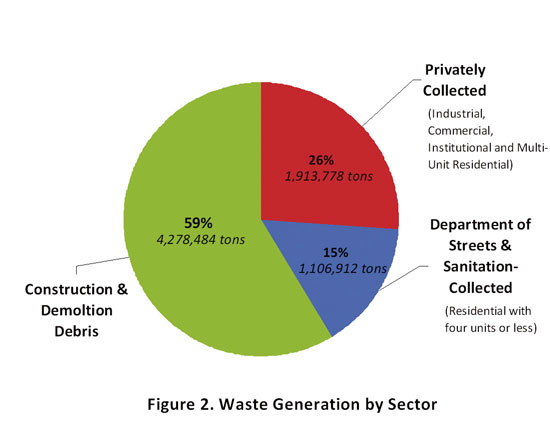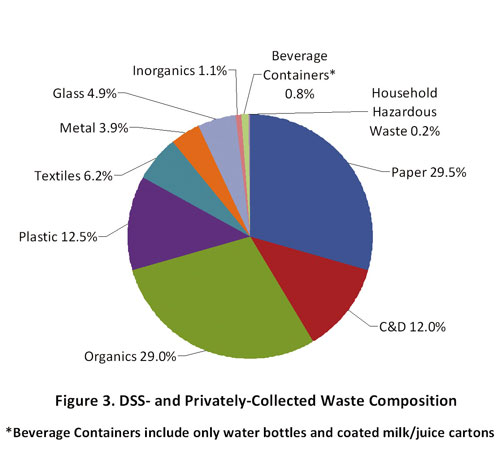2009 Chicago Waste Characterization Study and Waste Diversion Study Results
What is a Waste Characterization and Waste Diversion Study?
In 2009, the City of Chicago, Department of Environment contracted with CDM to perform a Waste Characterization Study and a Waste Diversion Study (the Studies). The Waste Characterization Study details the quantity, sources and composition of the city’s waste stream. The Waste Diversion Study measures the city’s current diversion rate and estimated our maximum reasonably achievable diversion rate. Both studies looked at waste composition, waste generation and diversion rates for three sectors:
- Department of Streets and Sanitation (DSS)-Collected Residential (4 units or less)
- Privately-Collected (residential buildings 5 units or more and institutional, industrial and commercial)
- Construction & Demolition (C&D)
What is a diversion rate?
A current diversion rate is the percentage of total waste currently being generated that is diverted from landfill disposal by means such as source reduction, reuse, recycling and composting. A maximum reasonably achievable diversion rate is the highest percentage of total waste that can be reasonably diverted from the landfill based on existing and accepted diversion technologies that are currently available in other areas but may not be implemented in Chicago yet.
How were the Studies completed?
To determine the composition of the City’s waste stream, over 500 samples from the  DSS-Collected Residential and Privately-Collected sectors were collected and physically characterized by manually sorting the samples into 81 different material categories and weighing them. In addition, over 350 samples from the C&D sector were collected and visually characterized due to their bulky size. The sampling was conducted at 14 waste facilities located across the city and performed over two seasons (summer/fall and winter). The diversion rate was measured based on data reported by recycling facilities to the City and surveying additional recycling and reuse facilities in and around the city.
DSS-Collected Residential and Privately-Collected sectors were collected and physically characterized by manually sorting the samples into 81 different material categories and weighing them. In addition, over 350 samples from the C&D sector were collected and visually characterized due to their bulky size. The sampling was conducted at 14 waste facilities located across the city and performed over two seasons (summer/fall and winter). The diversion rate was measured based on data reported by recycling facilities to the City and surveying additional recycling and reuse facilities in and around the city.
How much was is generated and how much are we diverting?
As a whole, the City of Chicago generates 7,299,174 tons of waste every year (See Figure 1 for generation by sector). Of that, 3,248,231 tons is currently being diverted, which represents a current overall diversion rate of 45%. The current diversion rates for the DSS-Collected Residential, Privately-Collected and C&D sectors are 8%, 19% and 65%, respectively. The maximum reasonably achievable overall diversion rate is 57% and 43%, 42% and 67% for the DSS-Collected Residential, Privately-Collected and C&D sectors.

What are we throwing away?For the DSS-Collected Residential and Privately-Collected sectors, as Figure 3 shows, the paper and organics material groups alone comprise 58.5% of our waste stream. Although some components within these two material groups have significant recycling rates (such as 64% of high-grade paper in the private sector), targeting these material groups for diversion or recycling offers the greatest impact.
As discussed above, the C&D sector is already achieving a 65% diversion rate! Although currently 90% or more of concrete, asphalt and metal are being captured, the Studies found that recycling materials such as wood, brick and gypsum could still be improved.

